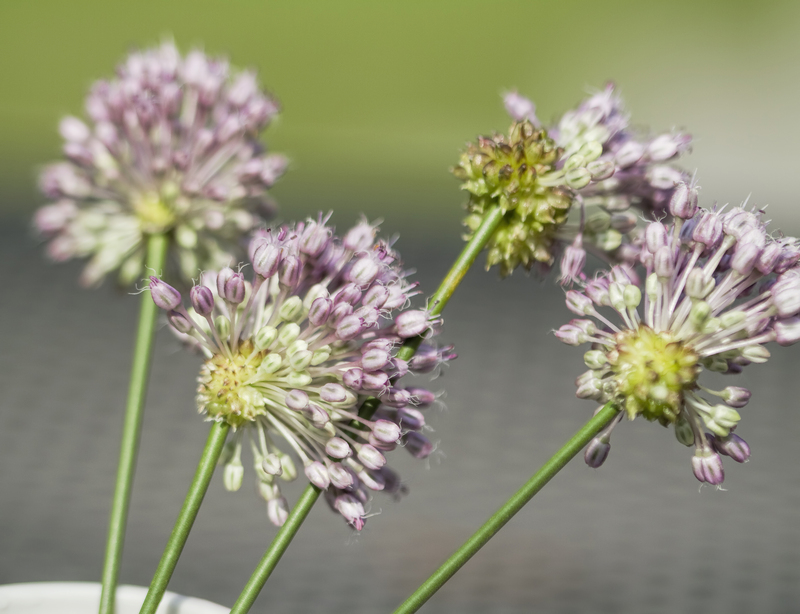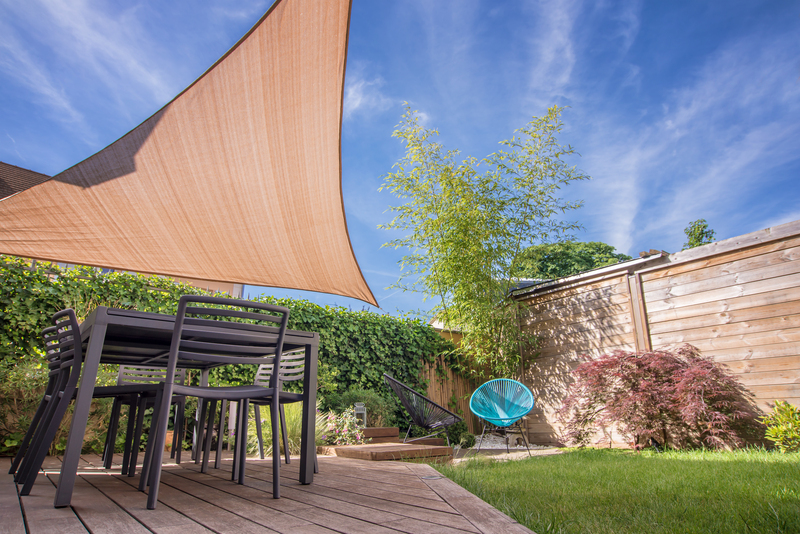The Essentials of Starting a Container Garden
Posted on 08/06/2025
The Essentials of Starting a Container Garden
Container gardening is a versatile and accessible way to bring greenery to your home, patio, or balcony, no matter the space limitations. Whether you want to grow fresh herbs, vibrant flowers, or even your own vegetables, starting a container garden opens up a world of possibilities. In this comprehensive guide, you'll discover everything you need to know about the essentials of container gardening, from choosing the right pots to maintaining healthy plants. Let's dig in!

Why Start a Container Garden?
There are countless reasons to start a container garden. Not only does it allow you to customize your gardening space, but it also offers creative opportunities and practical benefits:
- Space-saving: Perfect for apartments, balconies, and small yards.
- Mobility: Easily move plants to optimize sunlight or protect them from harsh weather.
- Design flexibility: Experiment with color, height, and texture by mixing containers and plants.
- Pest and disease control: Isolated pots limit the spread of pests and soilborne diseases.
- Personal satisfaction: Enjoy the process and rewards of growing your own plants, flowers, or food.
Choosing the Right Containers
The first essential step in starting a container garden is to select suitable containers. The size, material, and drainage capacity play crucial roles in your plants' health and growth.
Size Matters
- Larger Containers: Retain moisture longer, provide more space for root growth, and give better plant support.
- Smaller Pots: Quick to dry out but are suitable for herbs, succulents, and small annuals.
General Rule: The bigger the plant, the larger the pot it requires.
Material Options
- Terracotta and Clay: Porous, classic look, but can dry out quickly and may crack in freezing temperatures.
- Plastic: Lightweight, affordable, retains moisture well. Great for beginners.
- Ceramic: Decorative and heavier, but require care when moving and often more expensive.
- Metal: Modern aesthetics, but may heat up and damage roots in sun-exposed areas.
- Wood: Natural look, insulates roots well, but may deteriorate over time without treatment.
Drainage is Key
Always choose containers with drainage holes to prevent waterlogged roots, which can quickly lead to root rot and plant diseases. If necessary, drill extra holes or add a layer of gravel at the bottom to enhance drainage.
Selecting the Best Soil for Your Container Garden
Unlike in-ground gardening, the soil you use in containers is crucial for plant success. Ordinary garden soil is often too dense and may harbor pests or diseases. Instead, use specialized potting mixes designed for containers.
Potting Mix vs. Garden Soil
- Potting Mix: Light, drains well, and usually enriched with nutrients and organic matter.
- Garden Soil: Can compact and restrict root growth in pots, and may not drain quickly enough.
Look for potting mixes with added perlite or vermiculite for improved drainage. To boost fertility naturally, blend in compost or slow-release organic fertilizers.
Picking the Right Plants for Your Container Garden
One of the joys of container gardening is the flexibility to grow a wide variety of plants. When choosing, consider your climate, available light, and pot space. Here are some categories and popular options:
Edible Plants
- Herbs: Basil, parsley, mint, cilantro, thyme, and chives all thrive in pots.
- Vegetables: Tomatoes, peppers, lettuce, radishes, beans, and spinach are container favorites.
- Fruit: Strawberries and dwarf citrus trees do excellently in large containers.
Ornamental Plants
- Annual flowers: Petunias, marigolds, geraniums, and pansies add instant color.
- Perennials: Hostas, coreopsis, and perennial geraniums provide lasting beauty.
- Foliage plants: Ferns, coleus, caladium, and ornamental grasses offer texture and greenery.
- Succulents: Require minimal care and work well in small or shallow containers.
Light Considerations
Sunlight needs vary widely, so read plant labels carefully. Match your plant choices to your container garden's light conditions:
- Full sun: Direct sunlight for at least 6 hours daily (e.g., tomatoes, petunias).
- Partial sun/shade: 3-6 hours of sunlight (e.g., lettuce, ferns, impatiens).
- Full shade: Less than 3 hours of direct sunlight (e.g., hostas, caladium).
Planting Your Container Garden: Step-by-Step
1. Prepare Your Containers
- Clean pots thoroughly to prevent disease transfer.
- Ensure drainage holes are open and functional.
2. Add Potting Mix
- Fill container about 2/3 full with potting mix.
- Add any amendments, such as slow-release fertilizer or compost.
3. Arrange Your Plants
- Loosen roots and remove excess old soil.
- Position taller plants in the center/back, cascading or trailing plants around the edge.
- Mix flower colors and leaf textures for extra interest.
4. Fill in and Water
- Backfill around roots with potting soil, leaving about an inch below the rim.
- Water thoroughly until it drains from the bottom.
Caring for Your Container Garden
Once you've planted your container garden, ongoing care is vital for healthy growth and vibrant plants.
Watering
Pots dry out faster than ground beds. Check soil moisture daily, especially during hot weather. A good rule is to water when the top inch of soil feels dry:
- Morning watering: Reduces evaporation and helps prevent diseases.
- Self-watering pots or drip irrigation can simplify routine care for busy gardeners.
Feeding and Fertilizing
- Liquid fertilizer: Apply every 2-4 weeks during the growing season.
- Slow-release granules: Mix into soil at planting; supplement as needed.
- Compost tea or fish emulsion can provide organics boosts for leafy plants and edibles.
Tip: Over-fertilizing can damage sensitive roots and cause poor growth. Always follow the manufacturer's instructions.
Pruning and Deadheading
- Regularly remove dead flowers and yellow leaves to encourage new blooms and prevent disease.
- Pinch back leggy stems on herbs and flowering plants to promote bushier growth.
Pest and Disease Management
- Inspect plants regularly for signs of aphids, spider mites, or whiteflies.
- Use insecticidal soap sprays or introduce beneficial insects for natural control.
- Remove affected leaves promptly to contain potential outbreaks.
- Avoid overhead watering to limit fungal diseases.
Design Tips for Eye-Catching Container Gardens
An attractive container gardening setup isn't just about healthy plants--design and arrangement matter, too:
The "Thriller, Filler, Spiller" Formula
- Thriller: Tall, dramatic plant as the centerpiece (e.g., ornamental grass or canna lily).
- Filler: Bushy, round plants to add volume (e.g., begonias, coleus).
- Spiller: Trailing plants that drape over the pot edge (e.g., sweet potato vine, trailing petunias).
Color Coordination
- Choose a color scheme (complementary, monochromatic, or contrasting) for a professional look.
- Mix foliage textures and heights to create visual interest.
Arranging Containers
- Group containers of varying heights and sizes for layered effects.
- Use pedestals or stands to lift pots for dramatic displays.
- Arrange containers to maximize light exposure and accessibility.
Year-Round Container Gardening
With thoughtful plant selection, your container garden can thrive through every season:
- Spring: Pansies, bulbs, and early greens provide fresh color after winter.
- Summer: Annuals, tomatoes, peppers, and herbs flourish in sunshine and heat.
- Autumn: Mums, ornamental cabbage, and kale extend interest into cooler months.
- Winter: Evergreens, winter pansies, and even small conifers can brighten up dreary days.
Consider rotating plantings or switching out containers to keep your space vibrant all year long.

Common Mistakes to Avoid in Container Gardening
- Using the wrong soil: Always opt for quality potting mix to avoid compaction and drainage problems.
- Overcrowding: Plants need adequate space for roots and tops; read spacing recommendations carefully.
- Overwatering/Underwatering: Monitor moisture regularly, as containers have unique watering needs.
- Neglecting fertilization: Because nutrients leach from pots, regular feeding is essential for sustained growth.
- Ignoring sunlight requirements: All plants need the right amount of light to thrive, so match your plant choices to your location.
Final Thoughts: Cultivating Success in Your Container Garden
Starting a container garden is a practical, enjoyable, and rewarding way to beautify your environment and grow your own food. With the right containers, quality soil, thoughtful plant selection, and consistent care, anyone can succeed-- whether you're a novice or a seasoned gardener.
Remember: Each container is its own little garden. Experiment with combinations, pay attention to your plants' needs, and watch your green thumb thrive!
For more tips on the essentials of container gardening, follow trusted gardening sources, join local gardening groups, or visit your neighborhood nursery. Happy planting!

